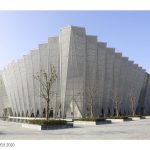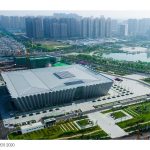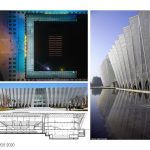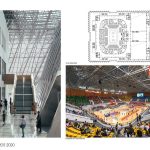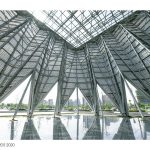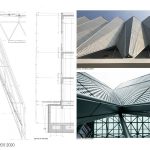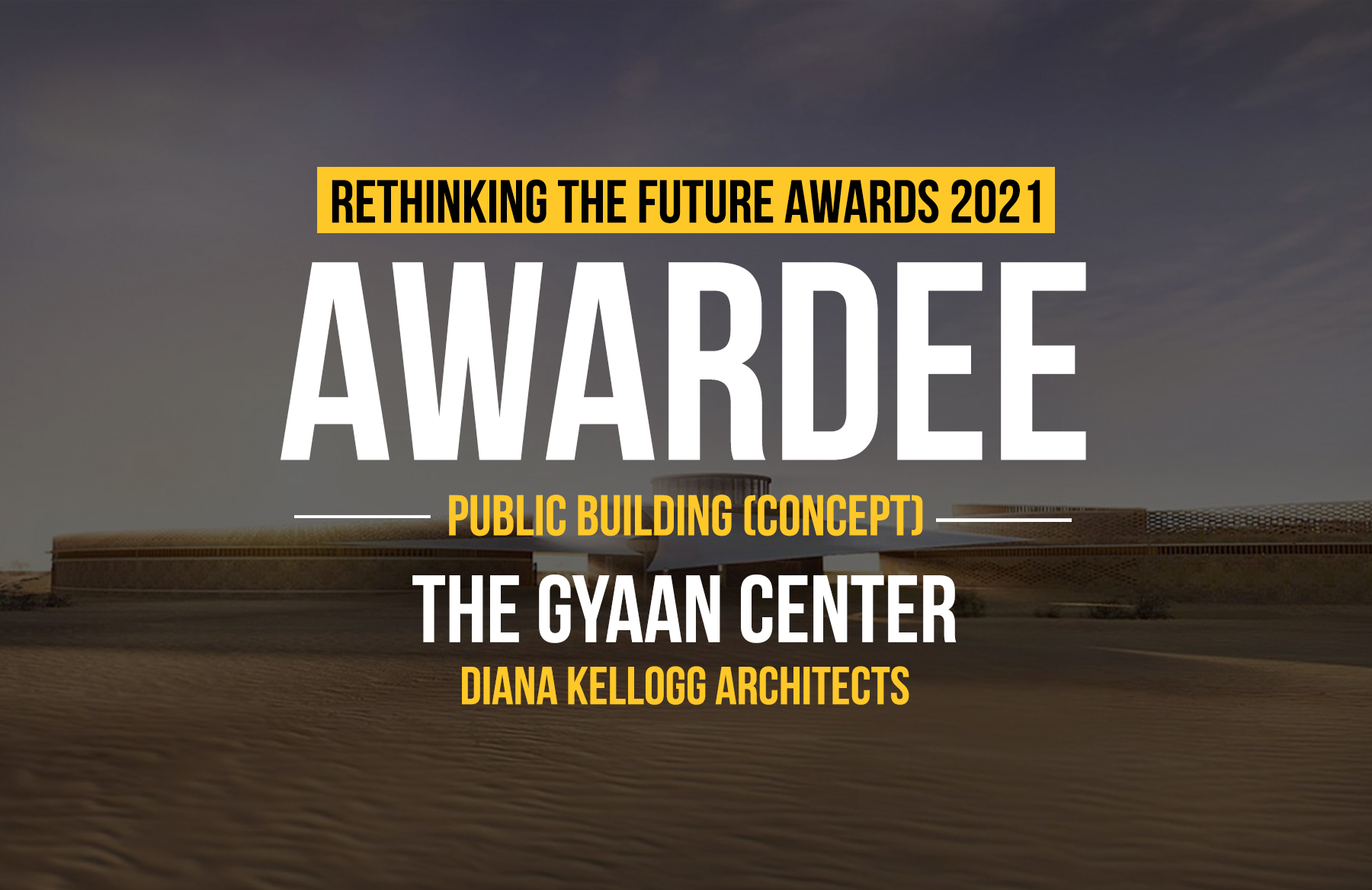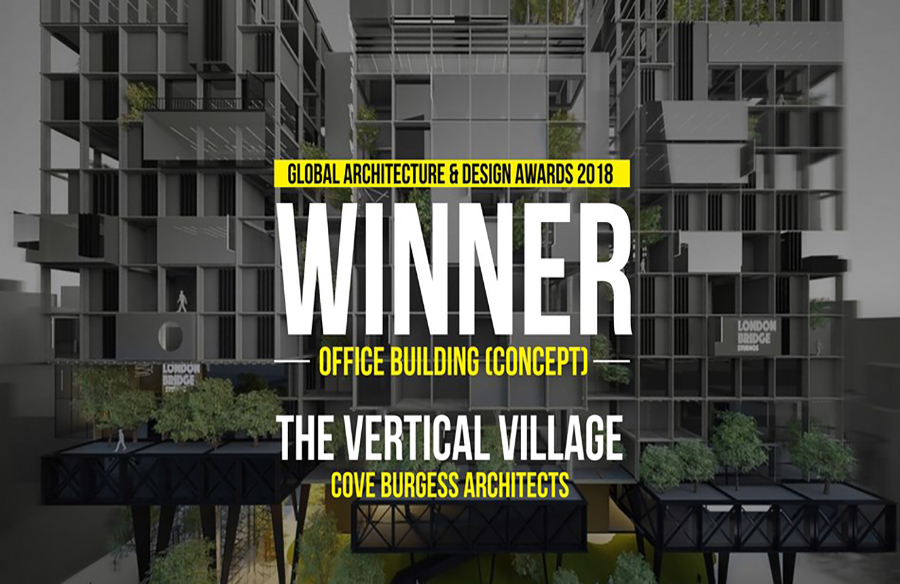Bozhou gymnasium integrates function, shape and space into a whole through simple design language, and conveys the characteristics of the times of contemporary sports architecture; highly refined cultural symbols are abstracted and presented intuitively, making the building have clear cultural “readability”; public space design from the perspective of urban design, the semi open public hall has blurred the boundary between building and city creates a “city living room” which is open to all citizens all day long.
Architecture, Construction & Design Awards 2020
First Award | Sports & Recreation (Built)
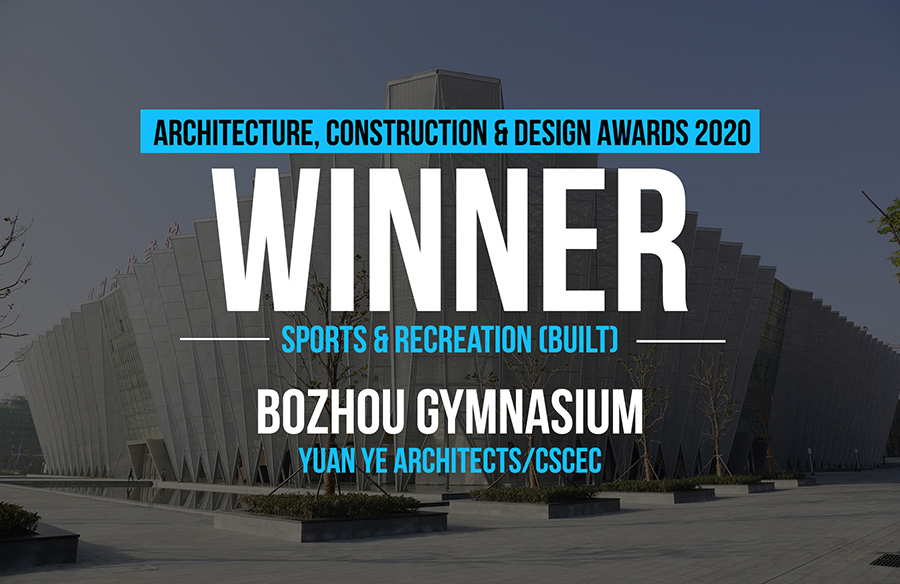
| Project Details | |
| Project Name: | Bozhou Gymnasium |
| Studio Name: | Yuan Ye Architects/ CSCEC |
| Design Team: | Yuan Ye , Qinxu, Li Zhaohui |
| Area: | 48650 m² |
| Year: | 2018 |
| Location: | Bozhou City, Anhui Province, China |
| Photography Credits: | Yuanye, Shen Fuzhi |
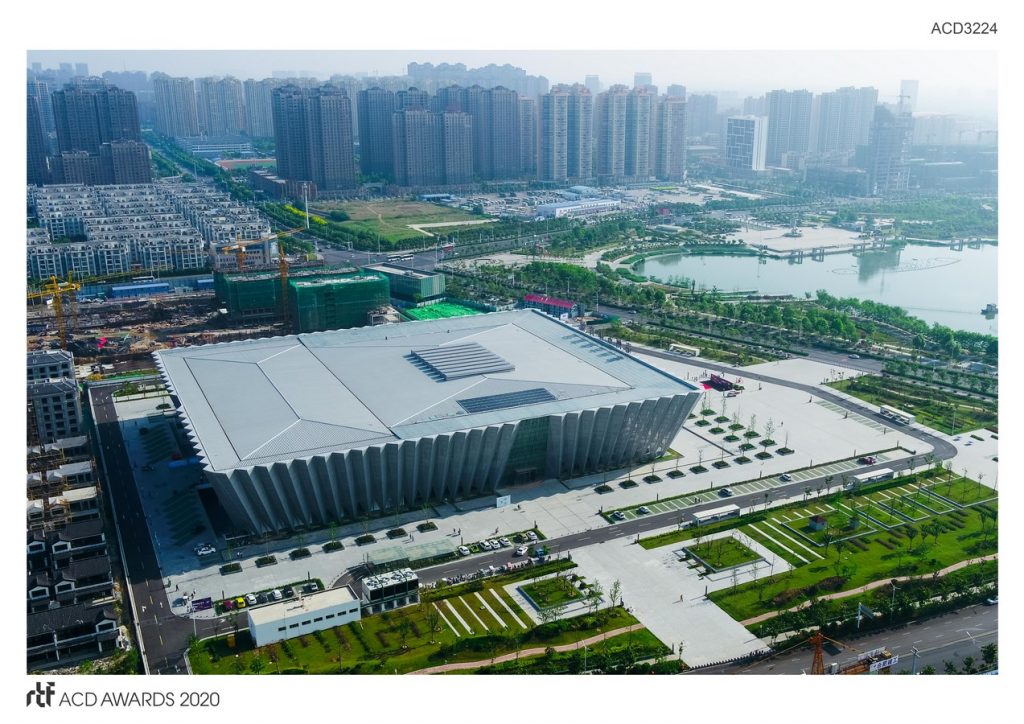
©Yuanye, Shen Fuzhi
Out of the pursuit of simplicity and publicity, Bozhou Gymnasium abandoned the traditional outdoor steps and two-tier platform. A circle of half-indoor and half-outdoor public space is designed between the main function volume and the outdoor environment as a space for people to gather, distribute and buffer. The public space on the east, north and south side is the public hall on the first floor and the underground courtyard on the West side. Vertical traffic is incorporated into the public hall, and the flow of people is introduced into the public lounge on the second floor through a wide staircase.The three-sided continuous public hall forms an L-shaped grand three-storey high-shared space, which is a place for audience rest, event information transmission, news conference and other urban public activities.
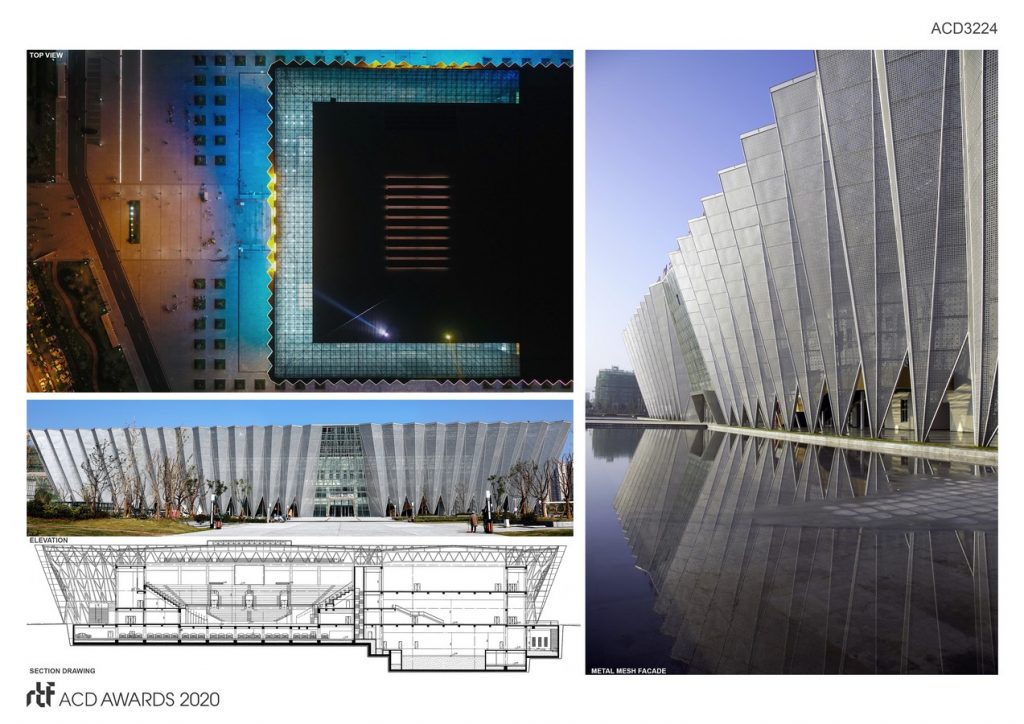
©Yuanye, Shen Fuzhi
The roof of the hall is illuminated by transparent glass roof. The steel grid structure of the roof, three-dimensional honing on the side and hollow metal skin form abundant light and shadow effects in the sunshine. Steel structure three-dimensional honing shrinks into a continuous triangular “columnar” at the landing site. People can travel freely inside and outside the building. The functional significance of the gate no longer exists, but is a symbol. The city square naturally extends to the inside of the gymnasium, and integrates indoor and outdoor space. It realizes the real “publicity” of public buildings in space, thus creating a “city living room” open to all people all the time, and realizing the ideal of “returning space rights to the people” through the design of public buildings.
Contemporary sports facilities are faced with challenges of spatial organization – not only to meet the needs of conventional competitive sports competition and training, but also to take into account the needs of citizens for fitness and the commercial operation of gymnasiums.
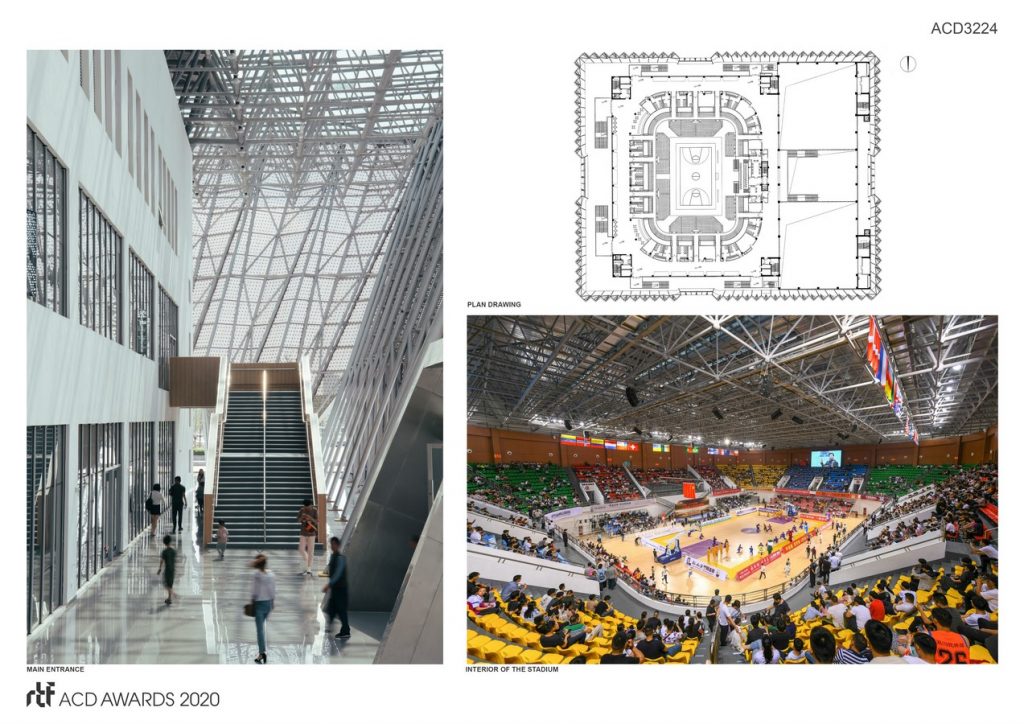
©Yuanye, Shen Fuzhi
This requires the gymnasium to be more flexible in the organization of functional space, higher space utilization rate and maximum value. We divide the main function of the gymnasium into two independent and closely related volumes: the east part is the gymnasium, the main entrance of the audience is set in this direction; the west part is the relatively independent training hall and the national fitness function. Even in race time, it is possible to use two areas at the same time without interacting with each other. The two functional spaces are combined organically, taking into account the different demands of space functions in both race and non-race periods, and satisfying the flexible and changeable requirements of functional space in operation.
- ©Yuanye, Shen Fuzhi
- ©Yuanye, Shen Fuzhi
- ©Yuanye, Shen Fuzhi
